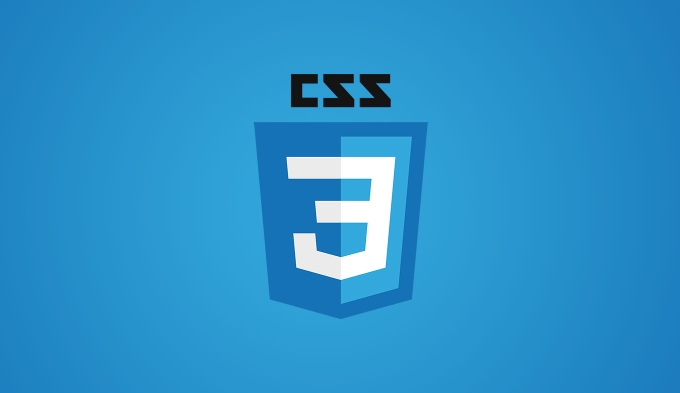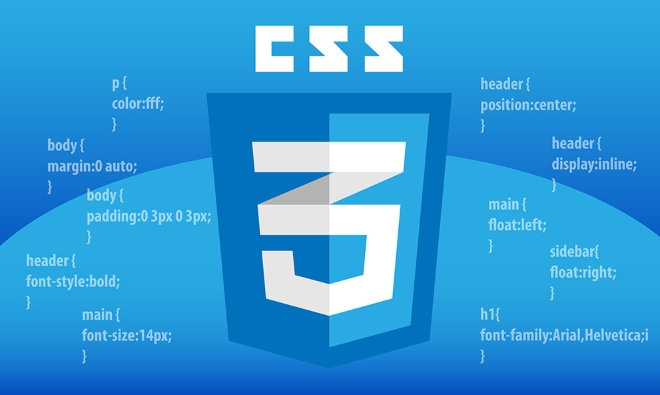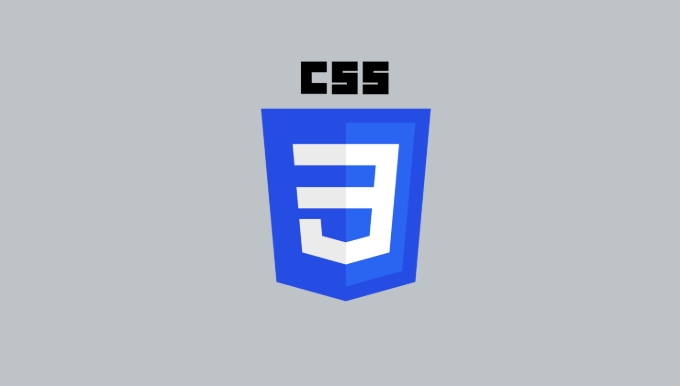How do you use multiple background images on a single element?
Jul 15, 2025 am 12:59 AMThe key to setting multiple background images for elements in CSS is to use comma separation and attribute order correctly. 1. Use the background-image attribute and use commas to separate multiple image addresses. The first image is displayed on the top layer; 2. Use background-repeat, background-position and other attributes to control the display method of each image, and the values of each attribute correspond to each image in order; 3. You can also use the background abbreviation attribute to define all parameters at once to improve code readability and maintenance; 4. Actual applications include buttons and icons, decorative borders, page title bars and other effects. You can master the corresponding relationship between the order and attributes and use them flexibly.

In CSS, it is not difficult to set multiple background images for an element. The key lies in the understanding of syntax and cascade order. You just need to use background-image attribute and separate multiple image addresses with commas.

1. Basic writing method: Use commas to separate multiple background images
You can directly list multiple URLs in background-image property, each URL corresponding to a background image:
.element {
background-image: url('top-image.png'), url('bottom-pattern.jpg');
}These pictures will be stacked in the order you wrote, the first picture is on the top layer , and the latter one is arranged downwards in sequence. So if you want a pattern to be covered on the bottom layer and another icon floats on it, then pay attention to the order.

2. Use with other background attributes
Setting the background image separately is not enough. It is usually necessary to use background-repeat , background-position and other attributes to control the display method of each image.
For example, if you want the first picture to be centered and not repeated, the second picture should be tiled:

.element {
background-image: url('icon.png'), url('pattern.jpg');
background-repeat: no-repeat, repeat;
background-position: center center, 0 0;
} What should be noted here is that each child attribute (such as background-repeat ) should also correspond to each picture in order . That is to say, the first value is given to the first picture, and the second one is given to the second picture.
3. Use abbreviation attributes to be clearer
If you think it's too long to write separately, you can also use background abbreviation attribute to do it at one time:
.element {
background:
url('icon.png') no-repeat center center,
url('pattern.jpg') repeat 0 0;
}This writing style looks clearer and easier to maintain. However, remember that different browsers may have slightly different support for abbreviation, so it is recommended to test it.
4. Examples of practical application scenarios
- Button plus icon : Overlap an icon on the button background image.
- Decorative borders : Use multiple background images to simulate complex border effects.
- Page title bar : The base image is a gradient or texture, and a decorative icon is placed on the upper layer.
For example:
.header {
background-image: url('title-icon.svg'), url('gradient-bg.png');
background-repeat: no-repeat, repeat-x;
background-position: left center, center top;
}This will achieve the effect of a gradient background above the icon on the left.
Basically, it is very convenient to master the correspondence between the order and attributes.
The above is the detailed content of How do you use multiple background images on a single element?. For more information, please follow other related articles on the PHP Chinese website!

Hot AI Tools

Undress AI Tool
Undress images for free

Undresser.AI Undress
AI-powered app for creating realistic nude photos

AI Clothes Remover
Online AI tool for removing clothes from photos.

Clothoff.io
AI clothes remover

Video Face Swap
Swap faces in any video effortlessly with our completely free AI face swap tool!

Hot Article

Hot Tools

Notepad++7.3.1
Easy-to-use and free code editor

SublimeText3 Chinese version
Chinese version, very easy to use

Zend Studio 13.0.1
Powerful PHP integrated development environment

Dreamweaver CS6
Visual web development tools

SublimeText3 Mac version
God-level code editing software (SublimeText3)

Hot Topics
 What is 'render-blocking CSS'?
Jun 24, 2025 am 12:42 AM
What is 'render-blocking CSS'?
Jun 24, 2025 am 12:42 AM
CSS blocks page rendering because browsers view inline and external CSS as key resources by default, especially with imported stylesheets, header large amounts of inline CSS, and unoptimized media query styles. 1. Extract critical CSS and embed it into HTML; 2. Delay loading non-critical CSS through JavaScript; 3. Use media attributes to optimize loading such as print styles; 4. Compress and merge CSS to reduce requests. It is recommended to use tools to extract key CSS, combine rel="preload" asynchronous loading, and use media delayed loading reasonably to avoid excessive splitting and complex script control.
 External vs. Internal CSS: What's the Best Approach?
Jun 20, 2025 am 12:45 AM
External vs. Internal CSS: What's the Best Approach?
Jun 20, 2025 am 12:45 AM
ThebestapproachforCSSdependsontheproject'sspecificneeds.Forlargerprojects,externalCSSisbetterduetomaintainabilityandreusability;forsmallerprojectsorsingle-pageapplications,internalCSSmightbemoresuitable.It'scrucialtobalanceprojectsize,performanceneed
 What are the key differences between inline, block, inline-block, and flex display values?
Jun 20, 2025 am 01:01 AM
What are the key differences between inline, block, inline-block, and flex display values?
Jun 20, 2025 am 01:01 AM
Choosing the correct display value in CSS is crucial because it controls the behavior of elements in the layout. 1.inline: Make elements flow like text, without occupying a single line, and cannot directly set width and height, suitable for elements in text, such as; 2.block: Make elements exclusively occupy one line and occupy all width, can set width and height and inner and outer margins, suitable for structured elements, such as; 3.inline-block: has both block characteristics and inline layout, can set size but still display in the same line, suitable for horizontal layouts that require consistent spacing; 4.flex: Modern layout mode, suitable for containers, easy to achieve alignment and distribution through justify-content, align-items and other attributes, yes
 What is Autoprefixer and how does it work?
Jul 02, 2025 am 01:15 AM
What is Autoprefixer and how does it work?
Jul 02, 2025 am 01:15 AM
Autoprefixer is a tool that automatically adds vendor prefixes to CSS attributes based on the target browser scope. 1. It solves the problem of manually maintaining prefixes with errors; 2. Work through the PostCSS plug-in form, parse CSS, analyze attributes that need to be prefixed, and generate code according to configuration; 3. The usage steps include installing plug-ins, setting browserslist, and enabling them in the build process; 4. Notes include not manually adding prefixes, keeping configuration updates, prefixes not all attributes, and it is recommended to use them with the preprocessor.
 How can you animate an SVG with CSS?
Jun 30, 2025 am 02:06 AM
How can you animate an SVG with CSS?
Jun 30, 2025 am 02:06 AM
AnimatingSVGwithCSSispossibleusingkeyframesforbasicanimationsandtransitionsforinteractiveeffects.1.Use@keyframestodefineanimationstagesforpropertieslikescale,opacity,andcolor.2.ApplytheanimationtoSVGelementssuchas,,orviaCSSclasses.3.Forhoverorstate-b
 What is the conic-gradient() function?
Jul 01, 2025 am 01:16 AM
What is the conic-gradient() function?
Jul 01, 2025 am 01:16 AM
Theconic-gradient()functioninCSScreatescirculargradientsthatrotatecolorstopsaroundacentralpoint.1.Itisidealforpiecharts,progressindicators,colorwheels,anddecorativebackgrounds.2.Itworksbydefiningcolorstopsatspecificangles,optionallystartingfromadefin
 What is the scope of a CSS Custom Property?
Jun 25, 2025 am 12:16 AM
What is the scope of a CSS Custom Property?
Jun 25, 2025 am 12:16 AM
The scope of CSS custom properties depends on the context of their declaration, global variables are usually defined in :root, while local variables are defined within a specific selector for componentization and isolation of styles. For example, variables defined in the .card class are only available for elements that match the class and their children. Best practices include: 1. Use: root to define global variables such as topic color; 2. Define local variables inside the component to implement encapsulation; 3. Avoid repeatedly declaring the same variable; 4. Pay attention to the coverage problems that may be caused by selector specificity. Additionally, CSS variables are case sensitive and should be defined before use to avoid errors. If the variable is undefined or the reference fails, the fallback value or default value initial will be used. Debug can be done through the browser developer
 CSS tutorial focusing on mobile-first design
Jul 02, 2025 am 12:52 AM
CSS tutorial focusing on mobile-first design
Jul 02, 2025 am 12:52 AM
Mobile-firstCSSdesignrequiressettingtheviewportmetatag,usingrelativeunits,stylingfromsmallscreensup,optimizingtypographyandtouchtargets.First,addtocontrolscaling.Second,use%,em,orreminsteadofpixelsforflexiblelayouts.Third,writebasestylesformobile,the






